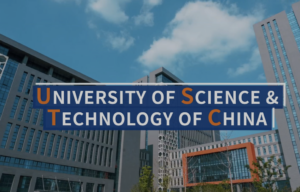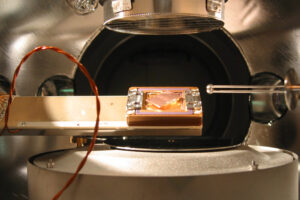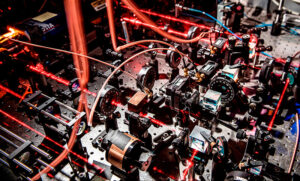20 Top Universities For Quantum Computing Research

Every major university is engaged in quantum computing research on some level. Many are deeply engaged in quantum computing research — and many have been for the past few decades.
This list is an attempt to spotlight 20 top universities for quantum computing research. Although this is not even close to an exhaustive list and any sort of list that ranks quantum computing research is subject to a multitude of variables, care has been taken to move these rankings beyond just top-of-mind recognition and focus on research output. This list also attempts to consider the centrality and density of quantum computing research in universities by creating a “students-per-paper” research that hopefully allows smaller schools to be included rather than serve as a list based sheerly on the number of research papers.
All of these universities offer considerable programs for other aspects of the quantum technology field, including quantum sensing, quantum communication and quantum cryptography, although studies in those fields may not necessarily have affected ordering.
While research output is one way to gauge a university’s commitment to quantum computing research, it is not the only. Quantum computing education, obviously, is a primary objective of these research institutions. Where possible, we include links to some of the quantum-focused educational departments, colleges and initiatives, along with real-world impact of these quantum leaders.
Here’s the list of 20 top universities for quantum computing research.
20 Top Universities For Quantum Computing Research
California Institute of Technology (Caltech)
-
- Student Population: 2,233 (estimated, throughout)
- Number of Papers: 850 (estimated, throughout)
- Ratio: 2.63
Caltech is a prominent leader in quantum research, primarily through its Institute for Quantum Information and Matter (IQIM). The institute focuses on theoretical and experimental aspects of quantum information science, including quantum computation and quantum many-body physics. In partnership with Amazon Web Services (AWS), Caltech aims to bridge fundamental research and commercial applications in quantum computing. The upcoming Dr. Allen and Charlotte Ginsburg Center for Quantum Precision Measurement, set to open in 2025, will further bolster its capabilities by uniting various quantum research disciplines under one roof.
- Quantum Information and Computation
- Caltech and Broadcom Announce Quantum Research and Development Partnership
- Breaking Ground on the Quantum World
Massachusetts Institute of Technology (MIT)
-
- Student Population: 11,520
- Number of Papers: 1,200
- Ratio: 9.60
Another one of the “IT” schools. MIT is renowned for its extensive contributions to quantum research, particularly through the MIT Center for Quantum Engineering and the Research Laboratory of Electronics. These institutions advance quantum computing, communication, and sensing technologies. MIT’s Lincoln Laboratory has developed a quantum computing architecture that integrates superconducting qubits. Additionally, the university’s Quantum Information Science group collaborates with government and industry partners to explore quantum algorithms and applications.
MIT Quantum Information Science
MIT Quantum Science and Engineering
MIT: Qubit Architecture Achieves Progress On Quantum Error Correction
Stanford University
-
- Student Population: 15,878
- Number of Papers: 1,150
- Ratio: 13.81
Stanford University is a leader in quantum research through many of its colleges and institutes, including its Stanford Institute for Theoretical Physics and the Ginzton Laboratory. Research areas include quantum information theory, quantum optics and condensed matter physics. Stanford promotes interdisciplinary collaboration, integrating efforts from physics, engineering and computer science departments.The university also boasts one of the great acronyms – Quantum Fundamentals Architecture and Machines, or Q-FARM. Stanford’s research has led to significant advancements in quantum control and error correction, essential for the development of practical quantum computers.
Stanford Quantum Computing Association
Stanford Center for Responsible Technology
Harvard University
-
- Student Population: 21,000
- Number of Papers: 1,100
- Ratio: 19.09
Harvard University presence on this list goes without saying – it’s a global leader in research. Its efforts in quantum research are no exception. The university features several quantum-focused programs, including the Harvard Quantum Initiative. Harvard researchers conduct impressive work in quantum many-body physics, quantum information and quantum materials. Researchers have also made significant strides in creating programmable quantum systems and exploring quantum algorithms. The university collaborates with MIT and other institutions through the Center for Ultracold Atoms and other joint ventures, driving innovation in quantum science and technology.
Quantum Science and Engineering
University of Chicago
-
- Student Population: 17,000
- Number of Papers: 800
- Ratio: 21.25
The Chicago area is one of the spots vying to build a national quantum hub. The University of Chicago’s impressive legacy in quantum research is arguably one of the biggest reasons that the region is in the hunt. With notable physicists like Enrico Fermi and Subrahmanyan Chandrasekhar contributing to its storied history, the University of Chicago is considered not just a national center for quantum research, but a global one. Among modern leaders, David Awschalom brings his expertise to the university’s thriving quantum community. The University of Chicago’s Pritzker School of Molecular Engineering and its Chicago Quantum Exchange are recognized globally for pioneering advancements in quantum computing, quantum communication, and quantum sensing. The university’s research emphasizes developing scalable quantum systems, innovative quantum algorithms, and quantum network technologies.
Chicago’s partnership with Argonne National Laboratory and Fermi National Accelerator Laboratory exemplifies its dedication to advancing practical quantum technologies. This collaboration fosters an interdisciplinary approach, integrating efforts across physics, engineering, and computer science to drive progress in quantum information science. The university’s efforts include exploring novel quantum materials, enhancing quantum coherence, and improving quantum error correction methods, positioning it as a key player in the global quantum research landscape.
UChicago Scientists Show Entanglement Is Responsible For Computational Hardness In Quantum Systems

University of Science and Technology of China (USTC)
-
- Student Population: 16,000
- Number of Papers: 750
- Ratio: 21.33
The University of Science and Technology of China (USTC) is renowned for its quantum research work, attracting physicists like Pan Jianwei, often dubbed the “father of quantum.” USTC’s Hefei National Laboratory for Physical Sciences at the Microscale is regarded as a leader in quantum advances, particularly in quantum communication, quantum computing, and quantum metrology.
USTC’s achievements include the development of the quantum satellite, Micius, which has facilitated long-distance quantum communication and key distribution, breaking new ground in secure communication technology. The university’s work in quantum computing is highlighted by advances in photonic quantum computing, quantum simulation and scalable quantum networks. These contributions underscore USTC’s leadership in both theoretical and applied quantum science.
Collaborations with leading global institutions and tech giants – we could list the university’s former partnership with Alibaba – bolster USTC’s role in accelerating quantum technology development. This integration of academic excellence and industry collaboration is pivotal to USTC’s mission of pushing the boundaries of quantum research and its practical applications.
Division of Quantum Physics and Quantum Information
USTC Achieves Zero-Knowledge Proof Based On Device-Independent Quantum Random Number Beacon
University of Oxford
-
- Student Population: 24,000
- Number of Papers: 1,050
- Ratio: 22.86
Stephen Hawking and Erwin Schrödinger are just some of the physicists with both Oxford University and quantum science in their biographies. We can put Quantinuum’s Bob Coecke on that list, too. The University of Oxford’s Department of Physics is one of the world’s finest quantum research hubs, with significant contributions in quantum computing, quantum cryptography and quantum optics. Oxford’s Quantum Group focuses on quantum computation and the foundations of quantum theory. The group is associated with the development of applied quantum tech, including ion-trap quantum computers and quantum networks. The university’s collaboration with the The UK Quantum Technology Hub in Computing and Simulation, which brings together academic and industry partners to accelerate progress in quantum computing, is another example of its commitment to advancing practical quantum systems.
Private Quantum Cloud: Oxford University Physicists Make Advance in ‘Blind Quantum Computing
University of Cambridge
-
- Student Population: 23,247
- Number of Papers: 1,000
- Ratio: 23.25
Just like the aforementioned University of Oxford, the University of Cambridge has nurtured a long line of quantum talent that stretches back to the field’s inception. Stephen Hawking, again, and Paul Dirac were stars in Cambridge’s galaxy. Researchers at the university lean on interdisciplinarity as they follow theoretical and experimental approaches to quantum information processing and quantum foundations. The Centre for Quantum Information and Foundations conducts cutting-edge research into quantum computing, quantum information theory and the broader implications of quantum mechanics.Cambridge is also involved in the European Quantum Flagship, a €1 billion initiative aimed at advancing quantum technologies across Europe. Additionally, the university’s work includes developing quantum networks and novel quantum materials, contributing significantly to the global quantum research landscape.
Department of Physics – The Cavendish Laboratory
ETH Zurich
-
- Student Population: 22,193
- Number of Papers: 950
- Ratio: 23.36
ETH Zurich is renowned in general for its contributions to quantum research, but quantum information theory, quantum optics and superconducting quantum circuits are among the university’s main contributions to the field. The Quantum Center is the main hub for the scientific and structural activities in quantum science and technology across departments at the uni. ETH Zurich’s research infrastructure includes advanced laboratories for the study of quantum phenomena and the development of quantum technologies. Speaking of superposition, the university’s collaborations stretch across the globe and feature many prestigious international institutions, many which are on this list. The university has been – and continues to be – instrumental in pioneering new quantum computing techniques and applications.
ETH Zurich Researchers Go Long With Entangled Quantum Objects
International Collaboration Works to Connect Two Error-Corrected Qubits

University of California, Berkeley
- Student Population: 42,327
- Number of Papers: 1,500
- Ratio: 28.22
The University of California, Berkeley, is a leader in quantum research and is rapidly growing its quantum research units and facilities, such as the Quantum Information and Computation Center. Berkeley’s research encompasses the quantum technology field, but is particularly known for work in quantum algorithms, quantum cryptography and the development of quantum hardware. The university integrates physics, computer science and engineering in its quest for quantum innovations. Berkeley researchers have been at the forefront of experimental and theoretical advancements in quantum information science.
National Science Foundation’s the Challenge Institute for Quantum Computation (CIQC)
IQM Signs Partnership With UC Berkeley to Develop Quantum Processors
University of Tokyo
-
- Student Population: 28,000
- Number of Papers: 750
- Ratio: 37.33
The University of Tokyo is a prominent institution in quantum research, focusing on quantum computing, quantum materials and quantum information theory. The university features a list of initiatives aimed at developing practical quantum technologies and understanding fundamental quantum mechanics. The University of Tokyo collaborates with global partners to advance quantum science and its applications. IBM-UTokyo Lab is an example of this.
Institute for Nano Quantum Information Electronics – The University Of Tokyo
University of Waterloo
-
- Student Population: 41,000
- Number of Papers: 900
- Ratio: 45.56
There are pioneering quantum institutions and then there is The University of Waterloo. The university is home to one of the earliest hubs of quantum research, the Institute for Quantum Computing (IQC). It’s acknowledged as a center for quantum research and education not just in Canada, or North America, but the world. IQC’s research spans quantum computing, quantum communication and quantum sensors, with a special emphasis on developing new quantum applications. The University of Waterloo’s collaborative environment and strong industry partnerships enhance its role in driving constant innovation in quantum information science. The university prides itself on educating all – young and old – about quantum.
Quantum School for Young Students
The Future of Quantum Computing in Environmental and Health Sciences
National University of Singapore (NUS)
-
- Student Population: 38,000
- Number of Papers: 800
- Ratio: 47.50
The National University of Singapore (NUS) is a leading institution in quantum research, with the Centre for Quantum Technologies (CQT) serving as one of the jewels in its quantum crown. Established in 2007, CQT brings together physicists, computer scientists and engineers to conduct interdisciplinary research into quantum information processing and quantum physics applications The center focuses on developing technologies such as ion traps and quantum optics, which are crucial for coherent control of photons and atoms ().
NUS plays a significant role in Singapore’s quantum research ecosystem, supported by initiatives like the Quantum Engineering Programme (QEP), launched in 2018. This program aims to develop practical quantum technologies and has established three national platforms: the National Quantum Computing Hub, the National Quantum Fabless Foundry, and the National Quantum-Safe Network. These platforms enhance capabilities in quantum computing, communication, and device manufacturing, positioning Singapore as a key player in global quantum research.
Singapore’s Three New National Platforms Aimed at Making Country a Global Quantum Leader
University of Colorado Boulder
-
- Student Population: 35,000
- Number of Papers: 700
- Ratio: 50.00
Neon Deion isn’t the only thing that shines at The University of Colorado Boulder – quantum does, too. The University of Colorado Boulder is renowned for its quantum research due to its researchers and extensive research infrastructure, particularly through JILA – joint institute with the National Institute of Standards and Technology (NIST). JILA researchers focus on quantum optics, atomic physics and precision measurement, contributing significantly to the understanding of quantum systems. The university’s Quantum Engineering Initiative is important to mention. The initiative lists its mission as “Building and expanding the College of Engineering and Applied Science’s efforts into quantum research and strengthening connections to our local and regional partners.”

University of Arizona
-
- Student Population: 45,000
- Number of Papers: 650
- Ratio: 69.23
The University of Arizona has established itself as a deep tech research leader and an educational innovator. The combination of those two factors are perhaps the reason behind U of A’s inclusion on the list of exemplars in quantum research. It houses several dedicated centers and initiatives that drive quantum computing advances. The university fosters interdisciplinary collaboration among physicists, computer scientists, and engineers to explore quantum information processing and its applications. Key areas of focus include the development of ion traps, superconducting quantum materials and quantum optics, essential for the control of photons and atoms necessary for scalable quantum computing .
The university supports these efforts through initiatives, such as Arizona Quantum Initiative and the Center for Quantum Networks that are bringing together the talent to enhance capabilities in quantum computing, communication and device manufacturing.
Quantum Information and Research Group
University of Arizona Engineers Show Quantum Advantage in Experiment With Quantum Sensors
University of Copenhagen
-
- Student Population: 37,000
- Number of Papers: 550
- Ratio: 67.27
The University of Copenhagen is a prominent institution in quantum research. Its Niels Bohr Institute is one of most well-known research institutions and is, of course, one of the most highly regarded quantum research entities in the world – public, private, governmental or otherwise. The institute focuses on quantum information theory, quantum optics, quantum devices and quantum mechanics. Researchers at the university also work on developing quantum communication systems and exploring the foundations of quantum mechanics. Organizationally, the university has numerous research centers associated with quantum tech. The University of Copenhagen collaborates with international institutions, contributing to global advances in quantum technologies and their applications.
Novo Nordisk Foundation Quantum Computing Programme
Niels Bohr Institute’s Extraordinary Nanochip Near ‘Quantum Advantage’ Stage

Purdue University
- Student Population: 46,000
- Number of Papers: 650
- Ratio: 70.77
Purdue University can lay stakes as a leading hub for quantum research nationally and globally, with key figures like Michael Manfra, a leader in quantum materials and devices, driving the institution’s advancements in this field. Purdue’s Quantum Science and Engineering Institute (QSEI) and its Birck Nanotechnology Center are listed as some of Purdue’s top places for quantum research, particularly in work for quantum computing, quantum communication and quantum sensing.
Purdue’s significant contributions include developing topological quantum computing platforms, advancing quantum dot technologies, and innovating quantum transduction methods. The university’s research efforts focus mainly on creating robust quantum systems, improving qubit coherence and enhancing quantum error correction techniques.
Collaborations with major industry players such as IBM and Microsoft, along with federal support from organizations like the National Science Foundation, show Purdue’s commitment to advancing quantum technologies. These partnerships enable the integration of academic research with practical applications, fostering the development of scalable quantum computing solutions and secure quantum communication networks.
Center for Quantum Technologies
Tsinghua University
-
- Student Population: 50,000
- Number of Papers: 600
- Ratio: 83.33
China is a research powerhouse – Tsinghua University is one of the nation’s premier centers of quantum research and education. The university’s Institute for Interdisciplinary Information Sciences (IIIS) conducts cutting-edge research in quantum computing, quantum communication and quantum cryptography. The institute was established in 2011, making it an early mover in quantum. Tsinghua’s overall interdisciplinary approach mixes physics, computer science and engineering.
Center for Quantum Information
China’s Research Advance Could Allow Non-Helium Cooling Of Quantum Computers
University of New South Wales (UNSW)
-
- Student Population: 64,000
- Number of Papers: 650
- Ratio: 98.46
Home to several quantum computing startups, Australia is – most definitely not coincidentally – the home of quantum research powerhouses, such as The University of New South Wales (UNSW). It has become a key player in the quantum ecosystem there, particularly through its Centre for Quantum Computation and Communication Technology (CQC2T). UNSW researchers are noted as some of the world’s leading experts in developing silicon-based quantum computing technologies, which are seen as a scalable approach to building practical quantum computers. Another area of expertise: The university’s efforts include exploring and developing quantum error correction methods to enhance the reliability of quantum computations.
Fundamental Quantum Technologies Laboratory
Condensed Matter Physics and Quantum Devices
Diraq, UNSW Researchers Say Spin Control Method Brings Billion-Qubit Quantum Chips Closer
University of Sydney
-
- Student Population: 73,000
- Number of Papers: 700
- Ratio: 104.29
The University of Sydney has established itself as a global leader in quantum research through its ability to combine deep theoretical investigations with interdisciplinary collaborations and a research community driven to unleash advantage of quantum on the world. Home to the prestigious Sydney Quantum Academy, the university brings together experts in physics, computer science, and engineering to advance the frontiers of quantum information science and technology. Key research areas include quantum computing, quantum communication and quantum materials, with a strong emphasis on developing practical applications for these emerging technologies.
Supported by substantial government and industry funding, the University of Sydney researchers are part of state-of-the-art facilities and collaborative platforms, such as the Australian Research Council Centre of Excellence for Engineered Quantum Systems (EQUS) and the Sydney Nanoscience Hub. These centers focus on making progress in quantum error correction, quantum algorithms and scalable quantum systems, positioning the university as a central hub in the global quantum research network.
Methodology and Limitations of Methodology
The task to create a list of top quantum research universities is complex to say the least and subject to many limitations. While there is little doubt that each university on this list is a global leader in quantum research, it should be considered a non-exhaustive list and that global quantum research exemplars are not included on the list. To create the list we gathered data on research output from four primary sources – Google Scholar, SholarGPT, Lens and The Quantum Insider Intelligence Platform, particularly for news articles and information. The primary classification was public and private universities. Government or predominantly government-backed research institutions were not included. Keywords included terms associated with quantum computing and quantum information science. The research papers did include some papers from pre-print servers, but attempts were made to minimize some non-research papers by filtering out ones that did not contain proper formatting, such as a lack of abstracts. Because research output changes from year to year, or more likely week to week, the number of research papers cover a period of ten years – 2014 to 2024. After several trials to avoid AI hallucination, the estimated numbers of papers were averaged and then rounded up to the nearest ten.
The hope with the current methodology was to create a list of quantum research leaders with a tradition and history of quantum as a central focus. In past lists, we relied on sheer research output, which didn’t seem fair to smaller schools with a centrality in quantum. In this list, we created a ratio of students per quantum-related paper.
Now, for the limitations. Though great effort was taken to gather the data, it’s likely incomplete. Several numbers were found for university enrollments, for example. While these figures estimate the total number of students, graduate students and post-doctoral students perform most of the research. Schools with bigger undergraduate populations may be unnecessarily “taxed” for this. Publication count is also just an estimate, as well. Keywords cannot accurately assess all the different type of quantum-related research underway at universities. By it’s very nature, publications are a look back at research output and does not account for work that is in process. Using AI to estimate output is subject to hallucinations, however we attempted to conduct several runs and verified statistics with other sources in an attempt to make sure estimates were “in the ballpark”.
